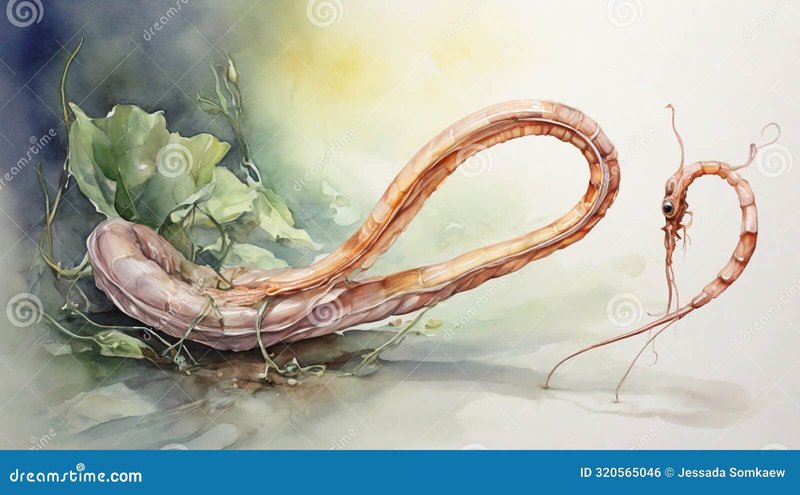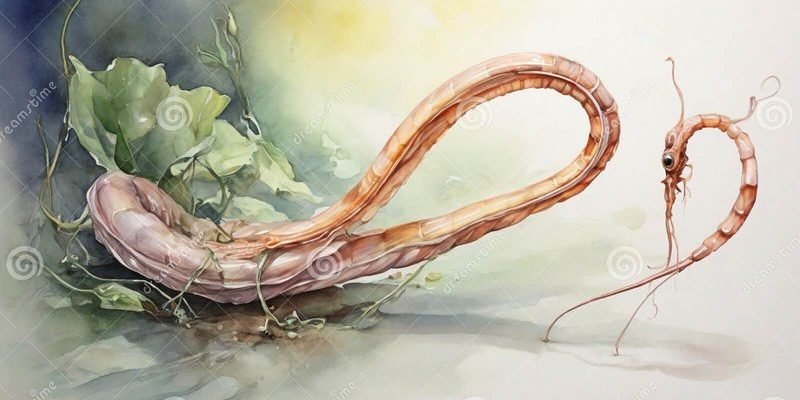
You might be wondering what exactly sets ribbon worms apart from your usual earthworms. Well, besides their stunning appearance, ribbon worms belong to a group called nemerteans, making them unique in the world of invertebrates. Just like a dancer moving gracefully across a stage, ribbon worms have developed remarkable skills for locomotion that allow them to navigate through their aquatic homes. Let’s dive a little deeper into their world and explore the art of ribbon worm movement.
Understanding Ribbon Worm Anatomy
To appreciate how ribbon worms glide and stretch, it helps to know a bit about their anatomy. These worms can range from just a few millimeters to several meters long, depending on the species. They have a soft, elongated body that’s usually a beautiful mix of colors like bright oranges, greens, and yellows.
One of the key features of ribbon worms is their **muscular structure**. Their bodies are packed with layers of muscles that allow for different types of movement. The outer layer can contract and relax while the inner muscles help them elongate. This combination creates a wave-like motion, almost like a flag in the wind.
Moreover, ribbon worms possess a special feature called a **proboscis**—a long, retractable appendage that they can shoot out to catch prey. This fascinating organ is not just for eating; it plays a role in their movement too. By using the proboscis, ribbon worms can anchor themselves to surfaces while they stretch their bodies forward, enabling them to glide smoothly through their environment.
Types of Movement in Ribbon Worms
Ribbon worms are known for their unique locomotion, which can be categorized mainly into two types: creeping and swimming.
Creeping Movement
Creeping is the most common way ribbon worms move when they’re on the ocean floor. They do this by using their muscles to pull and extend their bodies, almost like a slinky. With each contraction, they anchor part of their body down and stretch the rest forward.
– **Anchor and Glide**: By anchoring their bodies with their proboscis, they can push themselves forward.
– **Muscle Waves**: The muscles contract in a wave-like motion, which helps them glide smoothly without much effort.
This movement allows ribbon worms to explore crevices and hunt for food effectively. Have you ever seen a snake move? It’s a bit like that, but with the added grace of their soft, flowing bodies.
Swimming Movement
When it comes to swimming, ribbon worms can truly show off their skills. They utilize their bodies in a way that resembles undulating swimming motions.
– **Body Waves**: By making S-shaped curves with their bodies, they can propel themselves through water.
– **Tail Movements**: Some species have a tail that assists in steering, helping them navigate through their aquatic environment.
This swimming style isn’t just for show; it’s a vital part of how they escape predators, hunt, and explore. Imagine gliding effortlessly through a clear blue ocean—that’s what it’s like for these impressive creatures.
The Role of Fluid Dynamics
Now, you might be curious about how ribbon worms manage to move so gracefully in water. This all comes down to the principles of **fluid dynamics**. Water is much less dense than soil, allowing ribbon worms to take advantage of its properties to swim and glide.
When they stretch their bodies, they displace water, creating a wave effect that enhances their movement. Just like a boat cutting through waves, ribbon worms can move with minimal resistance, making their swimming energy-efficient.
This efficiency is crucial in their habitats, where they need to be alert and quick to respond to changes in their environment—whether it’s chasing prey or dodging threats. Understanding how they interact with the fluid around them gives us insight into their survival strategies.
Why Ribbon Worm Movement Matters
So why should we care about how ribbon worms glide and stretch? Well, their movements can tell us a lot about marine ecosystems. Healthy ribbon worm populations indicate a balanced environment because they play the role of both predator and prey.
Furthermore, studying their unique locomotion can inspire advancements in robotics and engineering. For instance, scientists are investigating how these creatures move to create more efficient underwater drones or soft robotics that mimic their fluid movements.
In our ever-changing environment, these little creatures remind us of the intricate connections between movement and survival. Their skills aren’t just for survival; they offer valuable lessons for science and technology too.
In wrapping up our exploration of ribbon worm movement, it’s clear these creatures are much more than what meets the eye. Their ability to glide and stretch gracefully sets them apart from other worms, showcasing nature’s incredible creativity. Whether they’re creeping along the ocean floor or swimming through the water with style, ribbon worms have perfected the art of movement.
As we learn more about them, we gain insight not just into their world but also into the broader complexities of marine life. Next time you’re near the ocean or a tidal pool, take a moment to appreciate the wonders beneath the surface—like the incredible ribbon worm, a master of movement in its aquatic home.

